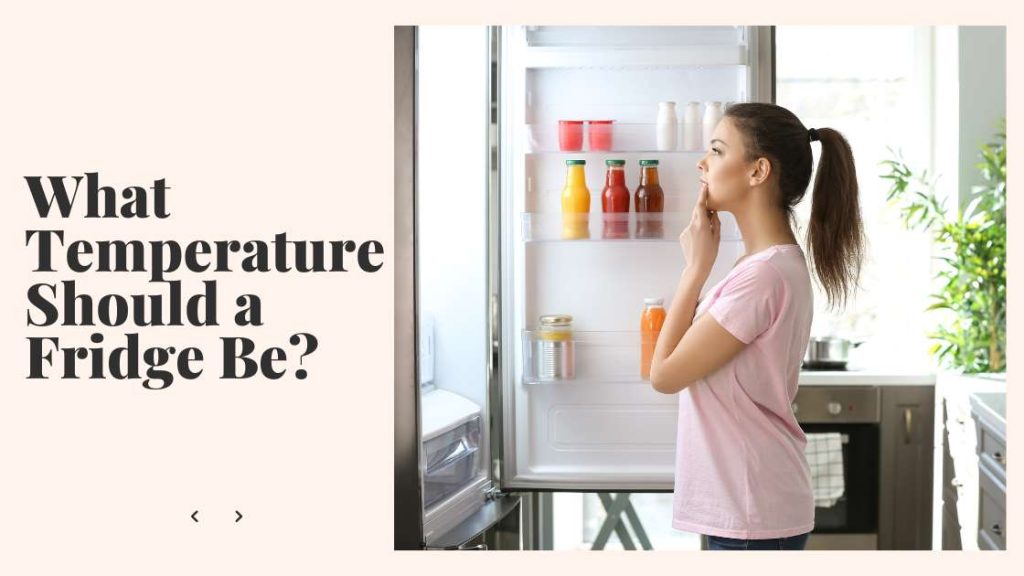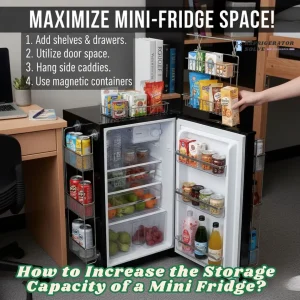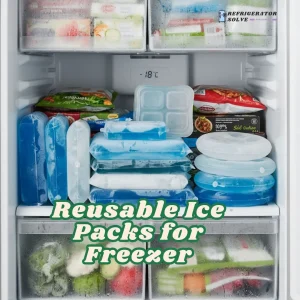Your fridge should be set at 40°F (4°C) or below. The freezer temperature should be 0°F (-18°C).
Ensuring that your refrigerator is operating at the correct temperature is crucial for food safety and energy efficiency. A fridge set too high can put perishable items like dairy, meat, and produce at risk for bacterial growth, while a fridge set too low unnecessarily boosts energy consumption and can freeze items meant to remain chilled.
Ensuring your fridge maintains the ideal temperature is crucial for keeping your food fresh and safe. But what exactly is the right temperature?
Most modern refrigerators are equipped with built-in thermometers, though for older models or greater accuracy, it’s wise to place an appliance thermometer inside. This way, you can get an exact reading.
Remember, the question “What Temperature Should a Fridge Be?” is not just about maintaining freshness—it’s also about safeguarding against foodborne illnesses and optimizing energy efficiency.
The Importance Of Proper Refrigeration
The Importance of Proper Refrigeration cannot be overstated. It is crucial for maintaining food quality, safety, and longevity. A fridge set at the right temperature keeps perishables fresh longer and prevents the growth of harmful bacteria. Additionally, proper refrigeration saves energy and reduces costs.
Food Safety Fundamentals
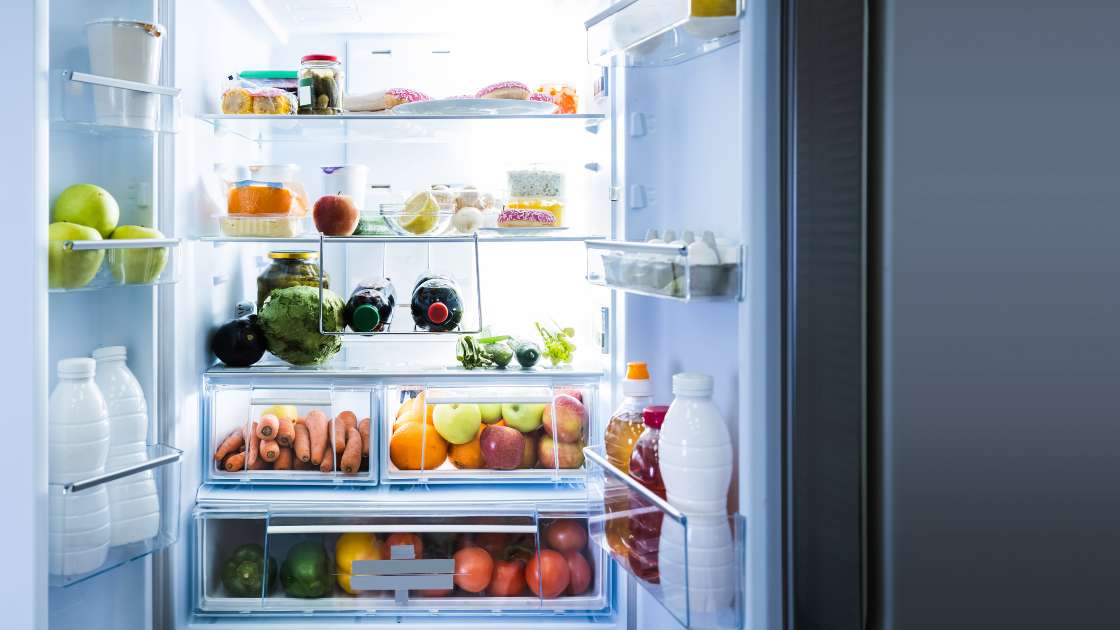
Keeping food safe is a top priority in any kitchen. The correct fridge temperature plays a pivotal role in this mission. The ideal range is between 35 and 38 degrees Fahrenheit (1.7 to 3.3 degrees Celsius).
Any higher, and you risk food spoilage and foodborne illnesses; any lower, and your food could freeze, altering the texture and possibly ruining it.
- Avoid the Danger Zone: Temperatures above 40°F (4°C) can cause bacteria to grow rapidly.
- Regular Checks: Use a separate appliance thermometer to confirm accuracy.
- Store Wisely: Keep raw meat, poultry, and seafood away from other foods to prevent cross-contamination.
Energy Efficiency Concerns
Efficient refrigeration not only safeguards your food but also minimizes your carbon footprint. A well-maintained and properly set fridge uses less energy, reducing electricity bills and environmental impact. Below are key points that aid in achieving energy efficiency:
| Action | Benefit |
|---|---|
| Correct Temperature Setting | Prevents overcooling, saving energy |
| Seal Inspection | Ensures the cold stays in and the warm stays out |
| Regular Maintenance | Keeps the fridge running efficiently |
Remember, a fridge working hard due to improper use consumes more energy. Keep vents unblocked, allow hot foods to cool before refrigerating, and ensure the unit isn’t exposed to direct sunlight or heat sources.
Unpacking The Science Of Chilled Storage
Keeping your fridge at the right temperature isn’t just about following a manufacturer’s guide; it’s about understanding the delicate balance that slows bacterial growth and maintains food quality.
Delve into the science behind why certain temperatures work best for chilled storage to keep your edibles fresh longer.
How Temperature Affects Food Spoilage
Foods are vulnerable to spoilage from bacteria, yeast, and mold. These microorganisms thrive in warm environments. As temperatures drop, their activity reduces, extending food shelf life.
Below 40°F (4°C), bacterial growth slows significantly. This is the sweet spot that most fridges should target for optimal food preservation.
- Meat, poultry, and dairy products need this cool environment to stay safe.
- Higher temperatures lead to more rapid spoilage and waste.
The Role Of Humidity In Fridge Settings
Temperature isn’t the sole factor; humidity also plays a pivotal role. Fridges come with crisper drawers designed to maintain specific humidity levels, which are essential for preserving the texture and nutrient content of fruits and vegetables.
| Fruit/Vegetable Type | Recommended Humidity |
|---|---|
| Leafy Greens | High humidity |
| Apples & Berries | Low humidity |
Achieving the right balance prevents food from wilting or getting too dry. It can also greatly reduce the growth of mold and other spoilage organisms.
Ideal Temperature Range For Your Fridge
Knowing the ideal temperature range for your fridge is key to keeping food fresh and safe. A well-regulated fridge temperature prevents bacteria from growing.
This ensures that the food stays delicious and lasts longer. Let’s explore what settings work best for preserving your groceries.
The FDA’s Recommendation
The FDA suggests that fridges stay at or below 40°F (4°C). This cold environment stops bacteria from multiplying quickly. It is vital to use a thermometer to check. This ensures that the fridge’s temperature is within the safe zone.
Variations For Different Types Of Food
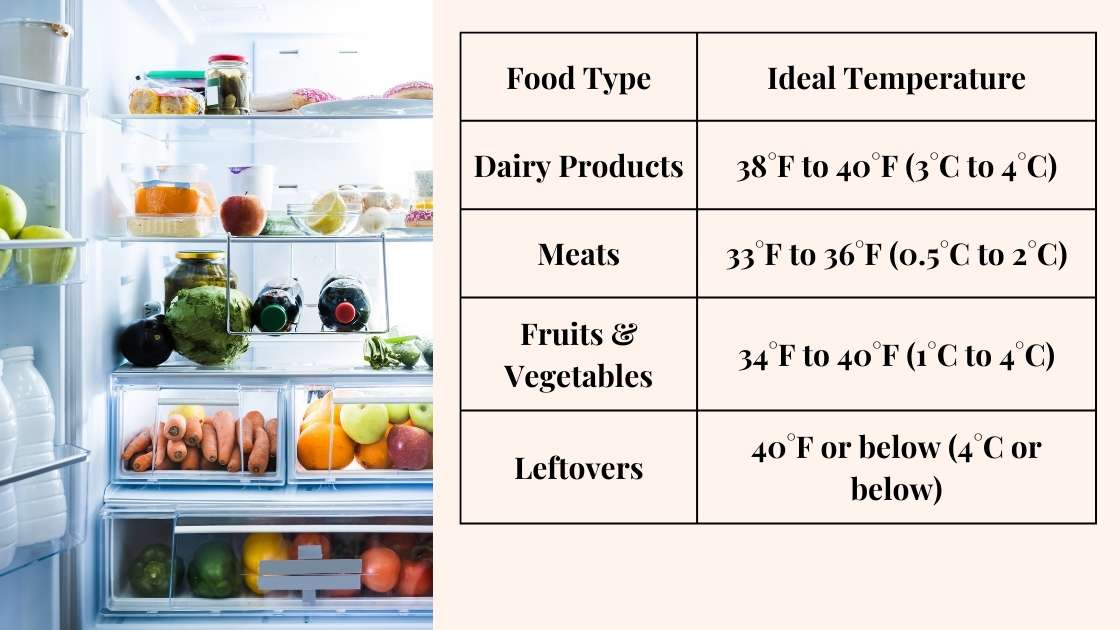
Not all foods are the same, and neither are their storage needs. Different items may require different temperatures. Below is a brief guide.
Table for different types of food and their ideal fridge temperature
| Food Type | Ideal Temperature |
|---|---|
| Dairy Products | 38°F to 40°F (3°C to 4°C) |
| Meats | 33°F to 36°F (0.5°C to 2°C) |
| Fruits & Vegetables | 34°F to 40°F (1°C to 4°C) |
| Leftovers | 40°F or below (4°C or below) |
Adjusting fridge shelves can help. Colder spots are perfect for meats. Warmer areas suit fruits and veggies. Regularly check and adjust settings to maintain the optimal temperature for each food category. This helps in extending shelf life and keeping flavors intact.
Measuring Fridge Temperature Accurately
Knowing the right temperature for a fridge ensures food stays fresh longer. To prevent food spoilage and bacteria growth, measuring your fridge temperature accurately is crucial.
Tools For Monitoring
Fridge thermometers are essential for precise temperature readings.
- Digital thermometers give quick, easy-to-read results.
- Dial thermometers are traditional but should be calibrated for accuracy.
- Smart home sensors can provide alerts if temperatures rise or fall.
Place the thermometer in the fridge’s center for the most reliable reading. Check regularly to keep temperatures consistent.
Troubleshooting Common Issues
If the fridge isn’t cool enough, try these steps:
- Ensure the thermometer is working correctly.
- Check door seals for leaks and clean if dirty.
- Set the thermostat correctly; typically between 3°C (37°F) and 4°C (40°F).
If temperatures are too low:
- Avoid overpacking to ensure air can circulate.
- Inspect vents for blockages and clear any obstructions.
Contact a professional if issues persist after troubleshooting.
Impact Of Temperature Fluctuations
Maintaining your fridge at the right temperature keeps food fresh and safe. Temperature fluctuations, though, can put this at risk. Think of your fridge as a climate-controlled safe for your food. Too warm, bacteria thrive. Too cold, food quality drops.
Variations could mean wasted food or even health hazards. Let’s explore everyday events that might disrupt your fridge’s climate and what you can do.
How Frequent Openings Affect Conditions
Frequent opening of your fridge door can cause trouble. Every time you search for a snack, warm air rushes in. This swap forces the fridge to work harder.
It tries to cool down again and again. This constant battle leads the fridge temperature to swing, risking food safety and higher energy bills. Monitoring how often you open your fridge can keep temperatures more stable.
Seasonal Adjustments To Fridge Settings
As seasons change, so do your fridge’s needs. Warm summers mean adjusting settings cooler to fight external heat. Cold winters might need a dial-back on cold settings, conserving energy.
Your kitchen’s temperature affects your fridge’s performance. Make sure to adapt the settings to maintain a constant interior temperature.
| Season | Setting |
|---|---|
| Spring/Fall | Normal |
| Summer | Cooler |
| Winter | Warmer |
- Check fridge temperature with a thermometer.
- Adjust settings as needed.
- Keep the fridge full for better temperature control.
Consistent fridge care keeps your food safe. Watch those doors and season changes! Your food, and your wallet, will thank you.
Organizing Your Fridge For Optimal Temperature

Setting the right temperature in your fridge keeps food fresh and saves energy. But the way you organize your fridge can also affect its temperature.
Let’s explore how to arrange your food to maintain the perfect chill!
Strategic Placement Of Food Items
Fridges have different temperature zones. Understanding these zones helps you place food strategically.
- Upper shelves are cooler – store dairy and drinks here.
- Lower shelves are consistent – place raw meat and seafood here.
- Drawers maintain higher humidity – store fruits and vegetables here.
- The door is the warmest – keep condiments here.
Avoiding Overstocking And Blockage Of Airflow
Your fridge needs air to circulate to keep the temperature stable.
- Do not overfill – leave space between items.
- Avoid piling food high on shelves.
- Keep vents clear from obstruction.
- Use containers to organize and reduce clutter.
Follow these tips to help your fridge cool efficiently and keep your food fresh longer.
Advanced Refrigeration Technologies
Keeping food fresh hinges on a fridge’s ability to maintain the perfect temperature. Modern advancements in refrigeration technology mean fridges are not what they used to be.
They’re smarter, more efficient, and better at adjusting to our needs. Let’s explore how these high-tech appliances ensure your food stays chilled to perfection.
Smart Fridges And Temperature Control
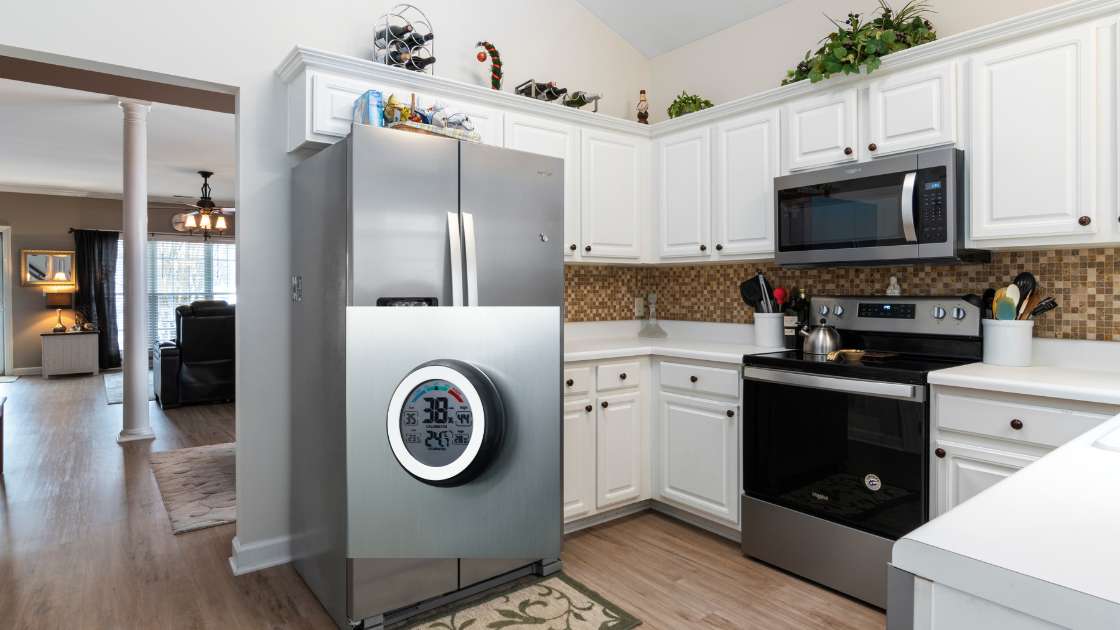
The era of smart fridges is upon us. These refrigerators come equipped with advanced sensors and microprocessors. They fine-tune cooling based on various factors such as:
- How often the door is opened
- The amount of food stored inside
- Ambient room temperature
But it’s not just about keeping cool. Smart fridges also connect to your devices. This means real-time alerts and temperature management, even when you’re away.
Set and monitor your fridge temperature with a tap on your smartphone to ensure your groceries are in the ideal climate.
The Future Of Refrigeration
The future promises even more groundbreaking technologies in refrigeration. Innovations aim to reduce energy consumption and extend food freshness. Consider the following possibilities:
- Magnetic cooling systems replace traditional compressors for quieter, more efficient operation.
- Nanotechnology for self-cleaning surfaces and improved insulation.
- Biometric access for enhanced security and personalized settings.
Zero-energy cooling units that run on renewable energy sources may soon be not just a dream, but a reality. These future fridges will not only keep your food at the right temperature. They will also play a vital role in sustaining the environment.
Regular Maintenance For Temperature Consistency

Ensuring that your fridge maintains the right temperature is crucial for food safety. Regular maintenance is the secret to consistent cooling. Let’s explore the steps to keep your fridge running smoothly.
Cleaning Schedules
Cleaning your fridge isn’t just about wiping spills. A clean fridge runs more efficiently.
- Weekly checks: Quick wipes help prevent buildup.
- Monthly deep cleans: Take out shelves. Wash them in soapy water.
Don’t forget the coils and seals. Dusty coils make your fridge work harder. This raises the temperature. Clean seals ensure the door closes tightly.
Professional Servicing And Health Checks
Just like a car, fridges need regular check-ups. Schedule a professional inspection yearly.
- Check refrigerant levels: Keeps cooling consistent.
- Inspect electrical connections: Prevents energy waste.
- Calibrate thermostat: Ensures accurate temperatures.
A professional sees problems you might miss. They’ll ensure your fridge stays in top shape.
Frequently Asked Questions On What Temperature Should A Fridge Be?
Is 37 Degrees Too Cold For A Refrigerator?
No, 37 degrees Fahrenheit is within the ideal temperature range for a refrigerator, which is between 35 and 38 degrees Fahrenheit to keep food fresh and safe.
Is 42 Degrees OK for Refrigerator?
No, 42 degrees is not ideal for a refrigerator. The recommended temperature is at or below 40 degrees Fahrenheit to keep food safe.
Should A Fridge Be On 1 Or 5?
A fridge’s optimal setting typically ranges between 3 to 4 for maintaining safe food temperatures, with 1 being the warmest and 5 the coldest setting. Adjust settings according to your specific model and cooling needs.
What Is The Best Temp For A Fridge?
The ideal refrigerator temperature is set at or below 40°F (4°C). This range ensures food safety by preventing bacterial growth.
What Is The Ideal Fridge Temperature Range?
Refrigerators should typically be set between 35°F and 38°F to maintain food safety and freshness.
How Can I Check My Fridge’s Temperature?
Use an appliance thermometer, placing it in the fridge’s center on the middle shelf for accurate reading.
Conclusion
Ensuring the correct fridge temperature is crucial for food safety and energy efficiency. Aim to keep your refrigerator at 40°F (4°C) or below and your freezer at 0°F (-18°C). By maintaining these optimal settings, you’ll minimize food waste, curb energy use, and keep your edibles safe and fresh.
Regularly monitor your fridge to uphold these vital temperatures.

